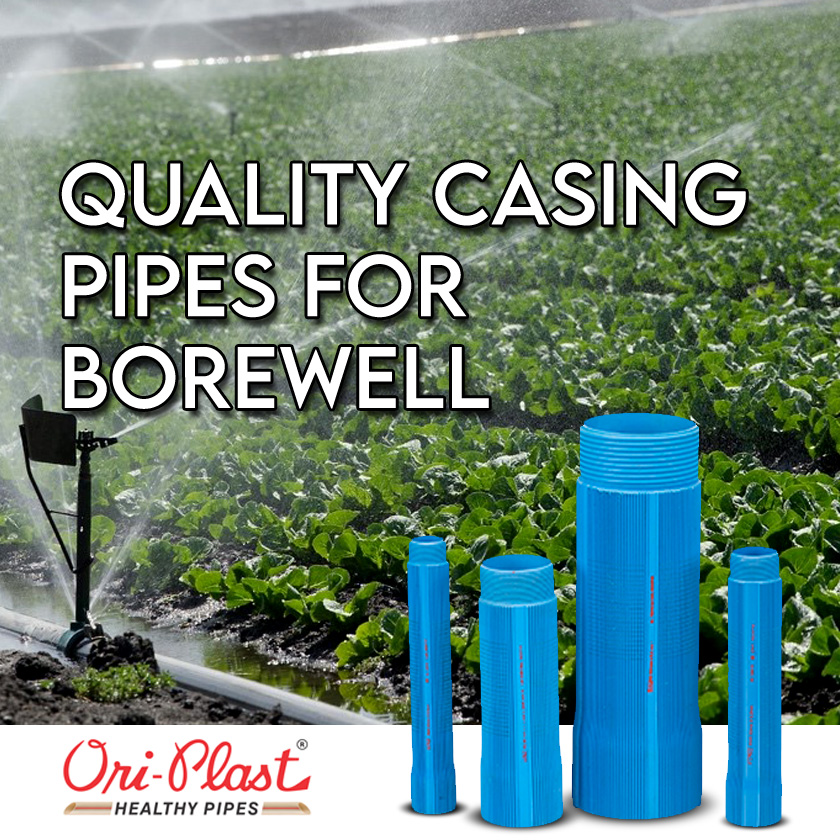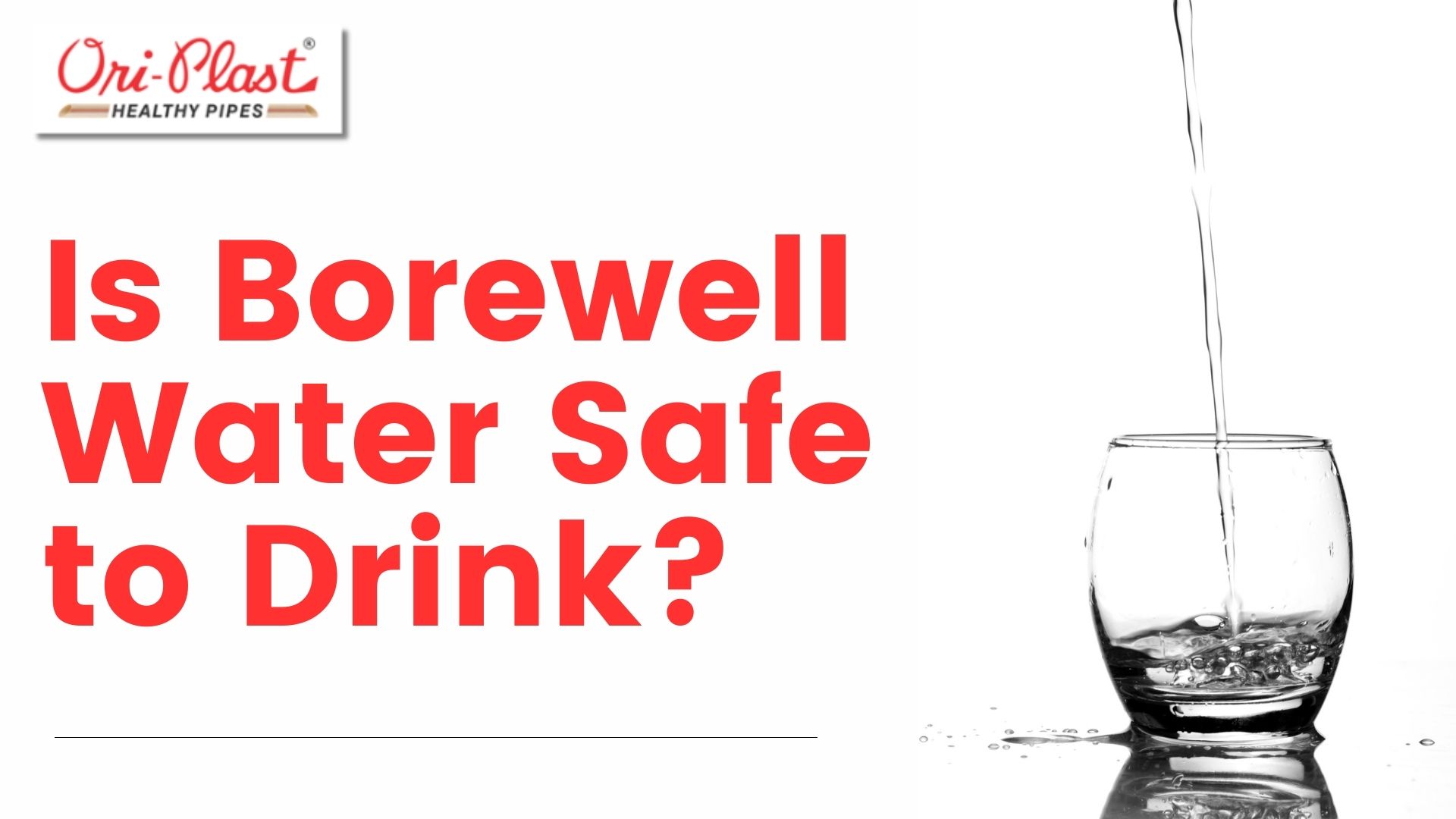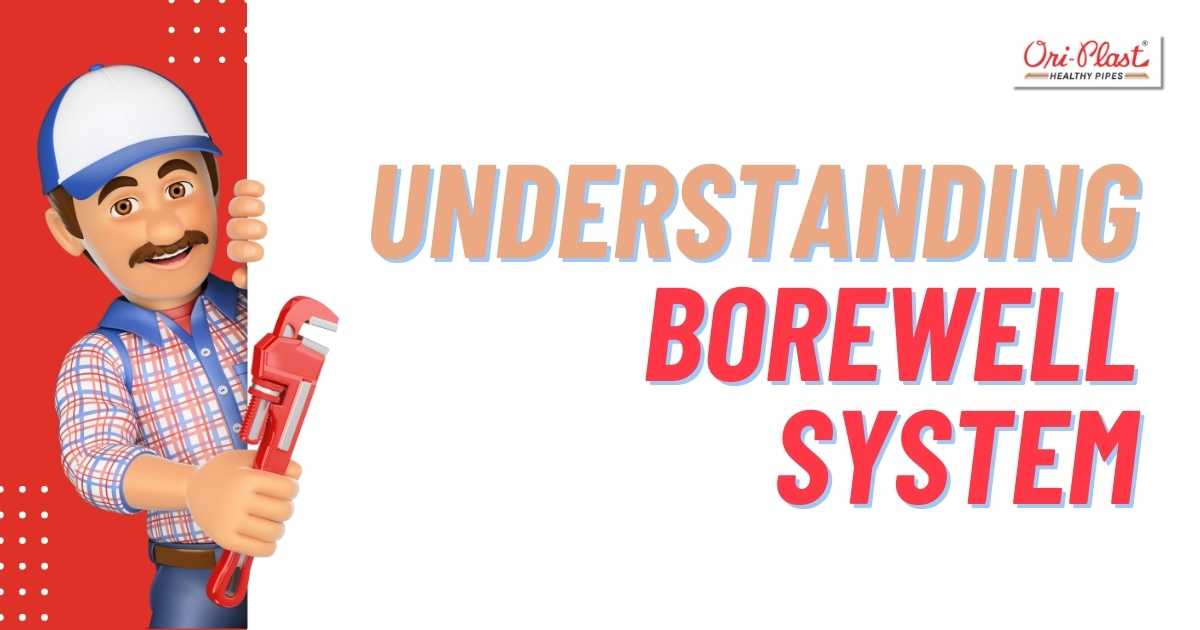A borewell casing is a vital component of any borewell that serves to protect and maintain the borewell over its lifetime. Installing high-quality borewell casing is crucial to prevent contamination and collapse while allowing for effective water extraction. In this comprehensive guide, we’ll explore everything you need to know about borewell casings from types of casings, materials used, sizes, installation methods and tips for maintenance.
Introduction to Borewell Casings
A borewell casing refers to the pipe that is installed into a freshly drilled borewell to maintain its integrity and prevent collapse. Essentially, a borewell casing shores up the borewell walls, sealing out contaminants from the surrounding soil and rock layers. This allows for hygienic water extraction for domestic, agricultural or commercial needs.
Borewell casings come in different materials like PVC, metal,concrete etc. depending on the soil/rock strata, water levels and budget. Proper casing selection and installation is vital to prevent the infiltration of pollutants and microorganisms as well as surface water. This ensures the borewell produces clean, contaminant-free water for its lifetime.
Importance of Borewell Casings
Borewell casings perform a number of critical functions:
1. Prevent Borewell Collapse: The casing lends structural stability and prevents the loose soil/weak rock strata from caving into the freshly drilled borewell. This maintains clears the internal diameter for inserting the submersible pump.
2. Seals Out Contaminants: Casing joints and caps prevent the seepage of surface contaminants like bacteria, chemicals, fertilizers and even salt water. This delivers safe water that meets quality standards.
3. Longevity: The casing protects the borewell itself from erosion and damage. This significantly increases the functional lifespan of the borewell.
4. Ease of Maintenance: A good casing allows for easy cleaning, inspection and maintenance without needing to excavate the bore well itself.
Thus the casing is an indispensable investment to protect and maintain the borewell delivering a reliable supply of clean water.
Types of Borewell Casings
The most common types of borewell casings include:
• PVC Casings
PVC or polyvinyl chloride casings are popular due to their low cost, lightweight, modular construction and corrosion resistance. Key advantages also include smooth interior walls for improved water flow and easy jointing. Disadvantages include low structural strength and potential leaching of chemical compounds into water in long term use.
• GI Pipe Casings
GI or galvanized iron casings have been traditionally ubiquitous owing to their high strength and longevity. GI can withstand external pressures and suit deep borewells. The key drawbacks are that GI pipes are heavy, difficult to transport, cut & joint plus subject to corrosion especially in saline soils. Periodic painting is required to enhance longevity.
• Stainless Steel Casings
SS casings offer the highest strength and very long working life with minimal corrosion even in aggressive subsoil conditions. The durable exterior protects against damage when driving or lowering casing into place. The smooth interior is ideal for pumps and prevents accumulation of residues. Despite higher initial cost, stainless steel more than makes up over decades of use.
• Concrete Casings
Concrete borewell pipes are best suited to stabilize large diameter wells in unstable soil conditions. The centered steel reinforcement lends heavy duty support. Being inert, concrete casings also maintain water purity. But concrete is brittle with less tensile strength than steel so conditions need to be evaluated. Higher logistical costs also exist in transport & handling given the bulk and weight.
Borewell Casing Materials
Factors in Material Selection
Choosing the optimal materials and dimensions for borewell casing basically depends on:
• Total depth and diameter required
• Subsoil and rock stratum type at site
• Groundwater characteristics – quantity, usage needed per day
• Water levels – static, dynamic (seasonal fluctuations)
• Water quality
• Chemical properties of subsoil (acidity, salinity etc) that could corrode
• Budget constraints
Based on these criteria, borewell owners & drilling contractors select among standard casing material options:
• PVC – cost-effective, corrosiveresistant, easy to install choice for majority domestic, commercial borewells upto 200 meter depth. Unplasticized PVC is tougher grade for rigidity. For deeper wells, PVC-cased bore wells need external cement grout sealing to reinforce strength.
• GI Pipe – economical, heavy duty carbon steel piping that can withstand high external pressures suiting borewell depths upto 500 meters. Requires corrosion protective painting & joint sealing. GI is common for community water supply bore wells.
• Stainless Steel – strongest and longlasting casing pipework with 100+ year lifespan. The high nickel/chromium content resists corrosion. Best insurance for deep, large diameter high yield bore wells upto 1000 meter depths.
• Concrete – best where soil stability is poor and large diameters required. Centered steel reinforcing allows heavy duty performance for community and agricultural borewells. Not advisable in acidic or saline soils that can react with and erode concrete.
Borewell Casing Diameter & Wall Thickness
The casing diameters and minimum wall thickness for the different materials are:
PVC Casings:
• 110 mm, 145 mm, 185 mm & 215 mm (4, 4.5, 6 & 8 inch)
• Wall thickness - 4mm upto 110 mm; 6mm above 110 mm
GI Pipes:
• 80mm, 100mm, 150mm and higher
• Light weight (<6meters depth) – 3.25mm thick
• Medium duty (upto 300 meter depth) – 4 - 5 mm
• Heavy duty (beyond 300 meters) – 6 - 10 mm thick
Stainless Steel:
• 150mm to 600mm+ pipe diameters available
• 3mm thick for depths upto 200m
• Above 200m well depth - minimum 5mm wall thickness
Concrete Pipes
• 250mm, 300mm, 350mm, 400mm and larger
• Mostly 150mm to 300mm thick concrete walls
• Steel reinforcement 2-6mm bars / 6mm-12mm rings
Borewell Casing Lengths
Standard casing pipe lengths vary by material:
• PVC Casing: 3 meter/4 meter columns, threaded and simple push-fit joints
• GI Pipes: 6 meter lengths, threaded / socket-spigot ends
• Stainless Steel: 6 meter colums, threaded couplings
• Concrete: 1-2 meter columns to allow handling, bell-spigot joints
Long Strings vs Short Segments
Two approaches exist for casing installation:
1. Long String Casing:
Joining casing pipes from top to bottom of borewell in one single, long string lowered down hole. Long casings allow faster deployment.
Best for stable geological conditions and used with GI, stainless steel and tough PVC casing sections.
2. Short Segment Casing:
Lowering sequentially stacked short columns of 1.5-4 meter into place. Allows adjustment to tackle unstable strata.
Works best for concrete and PVC casings. Short stacks let you install different material types based on depth.
Borewell Casing Joint Types
Proper seating of casing column joints is critical to prevent leaks and contamination ingress. The common casing joint options are:
• Threaded Joints – Male and female screw threaded joints tightly seal stainless steel or GI casing lengths. Needs precision machined threads.
• Spigot (plain end) and Socket (bell end) Joints – Tight friction push fit design suits concrete and PVC casings with good alignment needed.
• Flanged Joint – Robust design with flanged ends and gasket gives zero leakage even in deep wells. Needs accurate alignment.
• Cement Joints – After casing installation, cement grout is filled at joints and annular space for embedded watertight seal.
Borewell Casing Installation Method
A standard procedure is followed for placing the borewell casing:
1. Pilot Bore Drilling:
A slim pilot bore is first drilled into the ground upto the desired depth based on water discovery at site.
2. Borewell Reaming:
The pilot borehole is then enlarged through reaming activity to 50-300mm larger diameter to suit intended casing.
3. Casing Size Selection
The appropriate casing material and dimensions are selected to suit borewell depth and geological conditions.
4. Assembling Casing:
Depending on long string or segment approach, casing lengths are fixed together on ground level with joints.
5. Positioning Guide Shoe:
A tapered guide shoe is fixed at bottom edge of casing string to allow smooth downward movement through the borewell without damage.
6. Lowering Casing:
The assembled casing pipe is carefully lowered by crane into the reamed borewell right upto the bottom.
7. Centralizers:
Centralizers metal clamps may be affixed at intervals to center the casing and prevent lateral motion.
8. Surface Seal:
The top annular space between borewell and casing is sealed with cement & capping to isolate surface runoff ingress.
9. Developing Borewell:
Bore well is pumped to remove drilling fluid residues, normally for 8-12 hours completion.
Casing Installation Aids
To allow proper seating and ensure casing centering free of blockages, accessories include:
• Guide (Pilot) Shoes – The tapered guide shoe with cutting edge aids initial entry and downward movement into the pre-drilled pilot bore opening.
• Centralizers – To accurately center the casing and prevent lateral motion, centralizer sets are fixed to brace both sides. Positioning is done at one centralizer per 100 feet interval.
• Float Shoes – The rounded float shoe with check valve sits at bottom of casing string allowing water entry but blocking sediment ingress. This is used before the well screen.
• Well Screen – The perforated well screen section at water bearing strata level allows water entry excluding sand/silts. Keeps casing base clear.
Borewell Casing Handling Equipment
Proper methods and equipment for bore casing helps prevent damage and misalignment when lowering in place. These include:
• Lifting Slings/Hooks – Broad strong belts or chain slings needed to safely handle heavy concrete & steel casings along with three-way crane hooks.
• Pipe Rollers – Pipe rollers assist movement over ground without needing to lift or drag heavy casing lengths. Reduces scratches, dents.
• Tackle Pulleys – Well-anchored simple pulley or jib crane mechanisms provide leverage to align and carefully lower casing sections gently.
• Collar Locator – A casing collar locator is a useful accessory to electronically detect joint depths for logging and grouting activity.
Why Borewell Casing Centralizers Matter?
Borewell casing centralizers are an important accessory to ensure. Reasons why centralizers matter:
• Keeps Casing Vertical & Centered – Braces casing to prevent askew alignment, jamming against borewell wall or settling at an angle.
• Allows Smooth Insertion – With reduced fiction against surrounding strata, inserting casing right to bottom is easier.
• Maximize Active Bore Size – Helps maintain full unblocked diameter and water flow levels through casing interior.
• Focus Pumping Eddies – Keeps water entry area 360 degree round which focuses pumping drawdown effect for improved yield.
• Extend Borewell Life – A properly centered casing suffers lower structural strain. Greatly increases working life span.
Grouting Borewell Casings
Grouting means pressure injecting stabilizing material like cement, bentonite clay or even chip bentonite to seal the external space between borewell casing and wall. Reasons for grouting include:
• Prevent Surface Runoff Entry – Tight top seals using cement/clay isolate microbiological or chemical contamination from rainwater flows.
• Plugs Weak Zones – Fills space along unstable borewell sections prone to rupture or collapse.
• Reinforce Adjoining Strata – Bonds weak ground plus arrests fine sand ingress leading to bridging between rocks.
• Strengthens Casing Structurally – The encasing grout armor embeds the casing providing tremendous structural reinforcement. This shields against buckling or fracture due to internal/external pressures plus vertical shocks when pumping.
Borewell Casing Maintenance
With proper installation and sealing measures, very low maintenance is needed for durable casing piping like stainless steel. However annual inspection pays to maximize working life. Checks include:
• Checking Pump Operation – Any visible drop in yield or rise in power consumption indicates internal clogging issues.
• Water Quality Analysis – Sample testing will reveal any pollution ingress or blackish deposits signaling corrosion.
• Joint & Valve Leakage – Slow leaks point to loose joints or old valve issues needing tightening or gasket replacement.
• Visual Damage – Major dents and cracks require investigation and repair like cement grouting or shrouding damaged sections.
• Surface Protection – Periodic cleaning and painting of GI casing top area improves weather, termite and corrosion protection.
Dos and Don'ts for Borewell Casings
Best practices for borewell owners regarding casings:
Do’s:
• Select casing diameter so pump and piping insertion is easy without fouling
• Ensure certified welded joints/screwed threading for leakproof reliability
• Check verticality while lowering casing using plumb line/spirit level
• Allow 48 hour concrete curing before lowering PVC/GI casing into cement grouted holes
• Maintain 1 meter straight casing above ground level for easy access and repairs
• Cap top end securely to prevent debris, small animals falling in
• Inspect condition at least monthly – damage, leaks, water flow issues
Don’ts:
• Don’t compromise on quality to save on casing budget
• Avoid hammering actions while joining or lowering casing.
• Don't rush centralizer fixing or casing lowering leading to deviations
• Never directly expose PVC casing to sunlight/atmosphere – causes brittleness
• Don’t allow uncontrolled debris/garbage dumping around borewell mouth
Conclusion
Installing suitable good quality casing is a vital investment for the long term sustainability of any borewell. The different options in materials, joints and installation methodology allows for optimal structural stability and water quality preservation in varied well depths and geological conditions. Periodic inspection and maintenance best practices further safeguard your precious groundwater asset for decades to come.
Check out our wide range of High-quality Borewell pipes...



